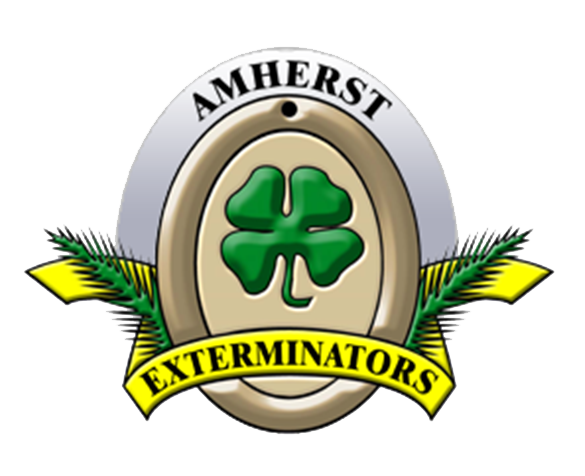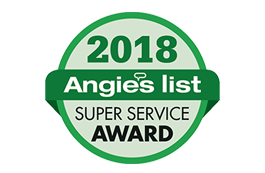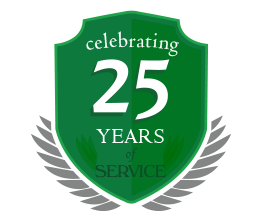1. Carpenter Ants
Before Treatment:
Be prepared to show the technician all problem areas. Make sure that problem areas are cleared of clutter so that the area can be treated properly. People need to be out of the structure during the treatment and afterwards as directed by the product label. Pets will also need to be out of the structure or contained in a room not being treated. Do not use any over the counter or organic pest control products prior to or after our service; doing so may prevent our chemicals from working properly.
We make every effort to locate the colony in your home or business. If we can treat the nest directly, your problem should be resolved quickly. You may get a few wandering ants for a few days to a week that were not in the nest at the time of the treatment. However, the carpenter ant treatment around the home will kill them. When we are unable to pinpoint the exact location of the nest, we rely on residual applications and baits to help control and eliminate the problem.
Exterior Barrier Treatment:
Ants will sometimes come in to forage from a nearby tree, stump, fence, firewood, etc. Carpenter Ants will forage from up to 100 yards away to gather food, especially in the spring. In this situation, we set a barrier around the perimeter of the structure 3 feet onto the structure and 3 feet out into the ground. If they do attempt to cross the barrier, they will be killed. (The principle is similar to a moat around a castle.)
Interior Residual: Applied to active areas and common entry points to kill as they contact.
Interior Baiting: Used to aid in control of foraging ants away from the main nest during the initial injection and days to follow.
Injection with a flushing Agent: If the technician can visibly see a Carpenter Ant nest or sawdust that indicates the nest location the technician will treat with a flushing application to kill the ants in the nest. A Residual treatment is applied to the nest for long term control.
What to Expect:
Still Seeing Ants after Treatment? Don’t Panic!
From the first few days to the first couple of weeks, you can also expect to see a great many more ants than you are used to seeing because the treatment has flushed them from their hiding areas and their trails. This is quite common since the ants are trying to escape the treatment. However, since your home has been treated, they will come in contact with the treatment rather quickly and thus be eliminated.
In addition, please realize that ants or other insects don’t drop dead as soon as they crawl across the treated areas. It can take a couple of hours (time varies) to kill them, but it will work. Please have realistic expectations after this treatment. This does not mean you will never see another ant and the occasional sighting inside. It takes a little time from the moment they cross the material to the time they die. If you see them dead, it means the treatment is working!
After Treatments:
Do not wash the treated areas with chemical cleaner for 14 days. You may sweep or vacuum the areas daily if desired. Do not use any over the counter or organic pest control products for 30 days, doing so may prevent our chemicals from working correctly.
Maintenance Service Charges:
Please be patient and allow the treatment the necessary time to totally solve your ant problem. Whether or not the actual nesting area is found and treated, it is imperative that you wait 30 days before any re-treatment to allow the materials to do their job. To treat before the 30 days is only putting new material over a treatment that is already working. The materials that we use have a two to three month residual effect. The label is the law and may limit how often a residence may be treated so that you will not be over-exposed to materials. If activity is present after 30 days a chargeable service call can be set up for the interior or exterior of the structure. Each additional service visit is $75.00 plus tax per application.
__________________________________________________________________________________________
2. Non Wood Destroying Ants (Pavement Ant, Small Sugar Feeding Ants, Odorous House Ant):
Before Treatment:
Be prepared to show the technician all problem areas. Make sure that problem areas are cleared of clutter so that the area can be treated properly. People need to be out of the structure during the treatment and afterwards as directed by the product label. Pets will also need to be out of the structure or contained in a room not being treated. Do not use any over the counter or organic pest control products prior to or after our service; doing so may prevent our chemicals from working properly.
The first step to eliminating non wood destroying ants is to identify the source of the problem. Pavement ants are a soil nesting species that make their nest in the ground. The nest is often found near pile of cement dust which has been kick out of the nest by the ants. This dust is kicked out to vent their nest. Treatment is done to problem area with residual applications and baits.
Exterior Barrier Treatment:
Are done around the perimeter of the structure 3 feet onto the structure and 3 feet out into the ground to control any ants that maybe foraging for food along the exterior of the home.
Interior Residual Application: Applied to active areas and common entry points to kill as they contact.
Interior Baiting Application: Ants will eat almost anything and this makes baits a very viable option for eliminating pavement ant nesting sites. Nearly any morsel of food that falls to the floor will be consumed.
What to Expect:
Still Seeing Ants after Treatment? Don’t Panic!
From the first few days to the first couple of weeks, you can also expect to see a great many more ants than you are used to seeing because the treatment is baiting them from their hiding areas and their trails. This is quite common since the ants are trying to escape the treatment. However, since your home has been treated, they will come in contact with the treatment rather quickly and thus be eliminated.
In addition, please realize that ants or other insects don’t drop dead as soon as they crawl across the treated areas. It can take a couple of hours (time varies) to kill them, but it will work. Please have realistic expectations after this treatment. This does not mean you will never see another ant and the occasional sighting inside. It takes a little time from the moment they cross the material to the time they die. If you see them dead, it means the treatment is working!
After Treatments:
Do not wash the treated areas with chemical cleaner for 14 days. You may sweep or vacuum the areas daily if desired. Do not use any over the counter or organic pest control products for 30 days, doing so may prevent our chemicals from working correctly.
Maintenance:
Please be patient and allow the treatment the necessary time to totally solve your ant problem. Whether or not the actual nesting area is found and treated, it is imperative that you wait 30 days before any re-treatment to allow the materials to do their job. To treat before the 30 days is only putting new material over a treatment that is already working. The materials that we use have a two to three month residual effect. The label is the law and may limit how often a residence may be treated so that you will not be over-exposed to materials.


